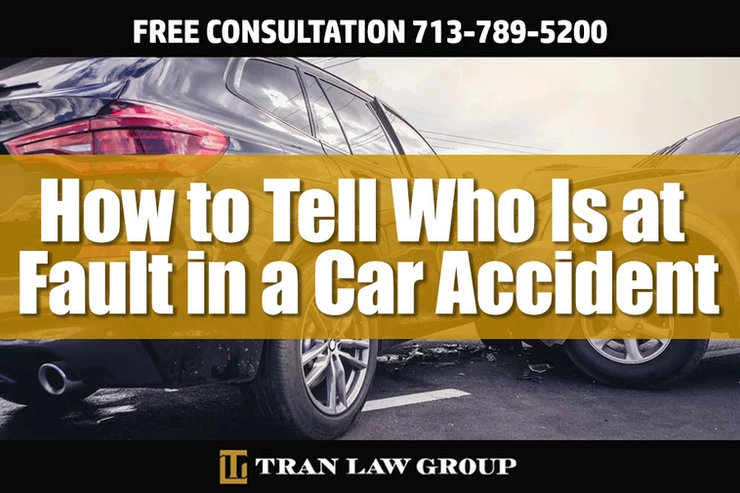Determining Fault and Liability After an Accident
The number of drivers on the road has seen a steady increase in the past years. Even as far back as 2009, over 200 million Americans were licensed drivers. With so many people jostling for space on roadways, it can be easy to lose sight of your own risk in the crowd. Many of us drive multiple times per day. And, still fail to recognize our risk of falling victim to a car accident.
Common Car Accidents
Most types of car accidents can occur under varying circumstances. This means that, depending on the surroundings and drivers in question at the time of the crash, an accident could prove more or less dangerous. A rear-end collision with one car traveling at five miles per hour is much different than one where a driver is zooming down the highway.
Minor Accidents
-
Rear-end collisions occur when a vehicle hits another vehicle from behind. They often occur at lower speeds— many drivers fail to brake in time at stop signs or traffic lights and collide with the vehicle in front of them. In some other cases, distracted drivers may be practicing negligent driving while looking at their mobile phones or other passengers in the vehicle.
-
Low-speed collisions refer to a wide variety of car accidents that happen at low speeds. Generally, these take place in heavy-traffic areas and tight spaces like neighborhoods and parking lots. Many low-speed collisions involve one stationary or idle vehicle.
-
Single-vehicle collisions may be minor or severe, but often prove relatively minor. They may occur as a result of hydroplaning or inattentive drivers. Single-vehicle collisions encapsulate everything from crashes caused by avoiding animals to vehicles barreling into commercial buildings.
Severe Accidents
-
Rear-end collisions that take place at high-speeds can prove tremendously dangerous. Many even end up fatal. Most victims of these accidents are unable to avoid the crashes that occur.
-
T-bone collisions take place when one party drives directly into the side of another vehicle. T-bone car accidents take place at intersections and other junctions and almost always indicate some party’s failure to yield. Most T-bone accidents occur as a result of failure or stop or yield.
-
Single-vehicle collisions, while often minor, can prove severe. Circumstances tend to dictate just how damaging these car accidents may be. If a driver crashes into a hard object or structure at high speeds, for example, it could prove catastrophic.
Regardless of whether a car accident is minor or severe, it still has the potential to deeply impact an individual’s health and wellbeing. Categorizing car accidents based on severity helps experts like emergency responders and attorneys gain a quicker, clearer understanding of a situation— but it does not paint an entire picture.
Car Accident Victims: Potential Injuries and Consequences
No matter how severe the car accident, virtually every crash has the potential to cause injuries and consequences for the parties involved. Injuries may range from shallow cuts and bruises to life-altering and brutal circumstances like paralysis or amputation.
Injuries Caused by Car Accidents
Some of the most catastrophic injuries that car accident victims experience include paralysis, traumatic brain injuries, and broken bones in the neck or back. Injuries like these have the potential to render an individual disabled for the rest of their life following a car accident. It’s crucial to seek medical attention as soon as possible in circumstances like these.
Many people involved in car accidents also fall victim to chest and rib injuries. While not always as outwardly dangerous as the injuries listed above, these can and do prove incredibly dangerous for victims. It’s possible for a car crash to crush the larynx and trachea, which can lead to difficulties with critical bodily functions. Other individuals manage to escape car accidents with muscle sprains or whiplash.
Consequences of Car Accident Injuries
Car accidents that lead to injuries often bring about other consequences, too. If an individual elects to pursue legal compensation for damages after a crash, they may also be eligible to receive funds for consequences like these:
-
Damage to physical property such as their vehicle or valuable items inside of it
-
Pain and suffering or mental anguish caused as a result of the car accident or injuries received during the car accident. Damages like these often prove difficult to quantify or define. Pain and suffering damages are meant to compensate victims for physical pain they endure as a result of their injuries; mental anguish damages serve to repay victims for emotional pain caused by a crash
-
Diminished earning capacity may come into play in severe car accidents, too. These damages are paid out to victims who are unable to work and earn the same amount of money that they could before the crash
Can I Still Sue for Injuries?
How Can a Lawyer Help?
After ensuring the safety of yourself and others involved in a car accident, an attorney should be near the top of your list of professionals to contact. You’ll need to work with your insurance company to take care of certain aspects of your case, but a legal professional can help advise you on the best steps for moving forward.



